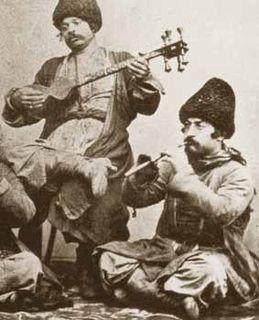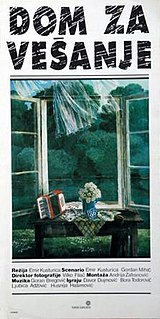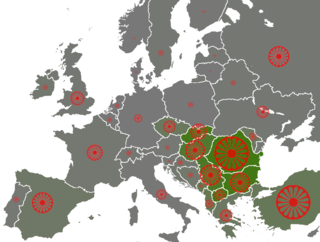Related Research Articles

The Romani, also known as Roma, are an Indo-Aryan ethnic group, traditionally nomadic itinerants living mostly in Europe, and diaspora populations in the Americas. The Romani as a people originate from the northern Indian subcontinent, from the Rajasthan, Haryana, and Punjab regions of India.

The Dom are a people with origins in the Indian subcontinent which through ancient migrations are found scattered across the Middle East, North Africa, Caucasus, Central Asia and still parts of the Indian subcontinent. The traditional language of the Dom is Domari, an endangered Indo-Aryan language, thereby making the Dom an Indo-Aryan ethnic group. They have been associated with another traditionally itinerant ethnic group of Indo-Aryans variously called the Rom/Roma/Romani people: the two groups have been said to have separated from each other or, at least, to share a similar history. Specifically, the ancestors of both the Dom and the Rom/Roma/Romani left the Northern Indian subcontinent sometime between the 6th and 11th century.

The Lom people, also known as Bosha by non-Loms or Armenian Romani or Caucasian Romani, are an ethnic group in historic Armenia. Their Lomavren language is a mixed language, combining Indo-Aryan and Armenian.

Time of the Gypsies is a 1988 Yugoslav coming-of-age fantasy crime drama film by director Emir Kusturica. Filmed in Romani and Serbo-Croatian, Time of the Gypsies tells the story of a young Romani man with magical powers who is tricked into engaging in petty crime. It is widely considered to be one of Kusturica's best films. The film was recorded in Sarajevo, Skopje and Milan, by the Forum Sarajevo. The film was selected as the Yugoslav entry for the Best Foreign Language Film at the 62nd Academy Awards, but was not accepted as a nominee.
The Kawliya, Qawliya or Awaz, Keche-Hjälp, also known as Zott and Ghorbati, is a community in Iraq of Indian origin, estimated to number over 60,000 people. Today they speak mostly Arabic, while their ethnolect is a mixture of Persian, Kurdish and Turkish, only spoken by the older generations. The largest tribes are the Bu-Baroud, Bu-Swailem, Bu-Helio, Bu-Dakhil, Bu-Akkar, Bu-Murad, Bu-Thanio, Bu-Shati, Al-Farahedah, Al-Mtairat, Bu-Khuzam, Bu-Abd, Bu-Nasif, Bu-Delli and Al-Nawar. Their main occupation is entertainment, and also small trades.
Domari is an endangered Indo-Aryan language, spoken by older Dom people scattered across the Middle East and North Africa. The language is reported to be spoken as far north as Azerbaijan and as far south as central Sudan, in Turkey, Iran, Iraq, Palestine, Israel, Jordan, Egypt, Sudan, Libya, Tunisia, Algeria, Morocco, Syria and Lebanon. Based on the systematicity of sound changes, we know with a fair degree of certainty that the names Domari and Romani derive from the Indo-Aryan word ḍom. The language itself actually derives from an Indo-Aryan language. The Arabs referred to them as nawar as they were a nomadic people that originally immigrated to the Middle East from India.
The Garachi, also spelled Karachi or Karaci, are a group of the Romani people living in Azerbaijan. Little research has been done on the Garachi, and most of what is known about them is based on the works of the 19th-century Russian scholars Kerope Patkanov and Jean-Marie Chopin.

The Roma people have several distinct populations, the largest being the Roma and the Iberian Calé or Caló, who reached Anatolia and the Balkans about the early 12th century, from a migration out of northwestern India beginning about 600 years earlier. They settled in present-day Turkey, Greece, Serbia, Romania, Croatia, Moldova, Bulgaria, North Macedonia, Hungary and Slovakia, by order of volume, and Spain. From the Balkans, they migrated throughout Europe and, in the nineteenth and later centuries, to the Americas. The Romani population in the United States is estimated at more than one million.
Nawar is an Arabic term for several sedentary communities used primarily in Jordan, Syria, Lebanon, Palestine. The term, regarded as derogatory, is used by Arabs for several diverse ethnic groups. They have historically been called "Gypsies", though as a whole they only have economic activities and lifestyle in connection with the Romani, possibly having distant linguistical relationship; only the Dom people have a clear connection with the Roma. The Dom people are especially known as Nawar.

Bilal is a Gypsy singer from Lebanon, who is notable for singing not only in Arabic, but mainly in Domari, his native language, that of the Doms, the nomadic community he belongs to.
Zott is the Arabic term for gypsies, Romani people and Dom people. The Zott were musicians who migrated in great numbers from Pakistan and India to Middle East about 1000 years ago. Their name was later applied to any itinerant entertainer of Indian origin, and came to be the common name of the Dom people in the Middle East, as English gypsy or tinker with contemptuous connotations. The Al-Qamus Al-Muhit glosses the term as equivalent to Nawar.

needed|date=September 2018}}

The Romani people are also known by a variety of other names; in English as gypsies or gipsies and Roma, in Greek as γύφτοι (gíftoi) or τσιγγάνοι (tsiggánoi), in Central and Eastern Europe as Tsingani, in France as gitans besides the dated bohémiens, manouches, in Italy as zingari and gitani, in Spain as gitanos, and in Portugal as ciganos.

Bab Huta is a neighborhood in the Muslim Quarter of the Old City of Jerusalem to the north of the Haram al-Sharif. It is named after the gate in the Haram compound which is Arabic for "Forgiveness Gate".

The Domari-speaking community in Syria, commonly identified as Dom and Nawar, is estimated to number 100–250,000 or 250–300,000 people. The vast majority is sedentary. There are semi-nomadic groups, some moving outside the country. In Aleppo, the Dom community is probably the largest, while they are reported to live in Damascus, Homs and Latakia as well. The community is highly marginalised in society, and they are referred to as Qurbāṭ and Qarač in the northern part, and Nawar elsewhere. These terms are used for various groups that mainly share socio-economic profile. The community is divided into clans.
Romani people in Libya speak the Domari language. They immigrated to the territory of the present day Libya from South Asia, particularly from India, in Byzantine times. Romani people self-segregated themselves for centuries from the dominant culture of Libya, who view Romani as dishonorable though clever. Historically, Gypsies in Libya have provided musical entertainment as weddings and other celebrations. The Romani people or Gypsies in Libya include subgroups like Nawar, Halebi and Ghagar.

Romani people in Egypt speak the Domari language. They migrated to the territory of the present day Egypt from South Asia, particularly from India, during the Byzantine times and mixed with the local population in the South for more than 2000 years. Romani people self-segregated themselves for centuries from the dominant culture of Egypt, who view Romani as dishonorable though clever. Historically, Gypsies in Egypt have provided musical entertainment at weddings and other celebrations, singing Egyptian traditional songs in return for money. The Romani people or Gypsies in Egypt include subgroups like Nawar, Halebi and Ghagar.
Some reports suggest the existence of Romani people in Morocco. Thomas (2000) states that "Xoraxane or Muslim Gypsies have been reported in Morocco. It is suspected that Kalo Gypsies from Spain have migrated to Morocco for business reasons. However no government statistics can substantiate this supposition. Similarly, it may be true that French speaking Gypsies or Manouche may have in the past or still today traveled and worked in Morocco but there is no evidence of this at the moment." Phillips (2001) mentions rather speculatively that "Some Kali or Gitan are probably in Morocco." The available reports are not sufficiently precise to confirm the Romani identity or even existence of such groups, but in the event that they exist and are of Romani origin, they would have immigrated to the territory of the present day Morocco ultimately from South Asia, and proximately from Spain and/or Algeria.
Romani people in Algeria are reported to include at least two groups: the Afrikaya, and the Xoraxane. The Afrikaya are possibly of Manouche origins, and speak French. The Xoraxane are Muslim and their original language is Romani. Roma in general ultimately come from South Asia, particularly from Northern India, having reached the Mediterranean region in Byzantine times.
Romani people in Tunisia speak the Domari language. They immigrated to the territory of the present day Tunisia from South Asia, particularly from India, in Byzantine times. Romani people self-segregated themselves for centuries from the dominant culture of Tunisia, who view Romani as dishonorable though clever. Historically, Gypsies in Tunisia have provided musical entertainment as weddings and other celebrations. The Romani people or Gypsies in Tunisia include subgroups like Nawar, Halebi and Ghagar.
References
- ↑ Peoples on the Move: Introducing the Nomads of the World. By David J. Phillips
- ↑ Berland, Joseph C. (2004). Customary Strangers: New Perspectives on Peripatetic Peoples in the Middle East, Africa, and Asia. Westport, Connecticut: Praeger Publishers. ISBN 0-89789-771-4 . Retrieved 2013-10-28.